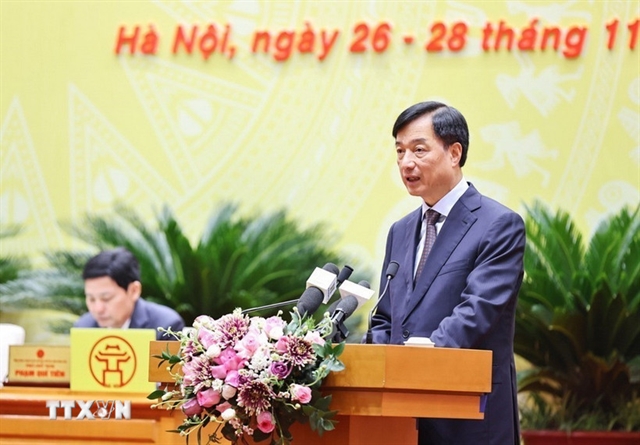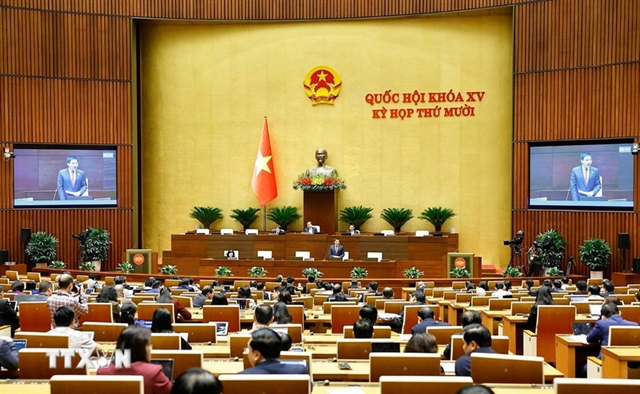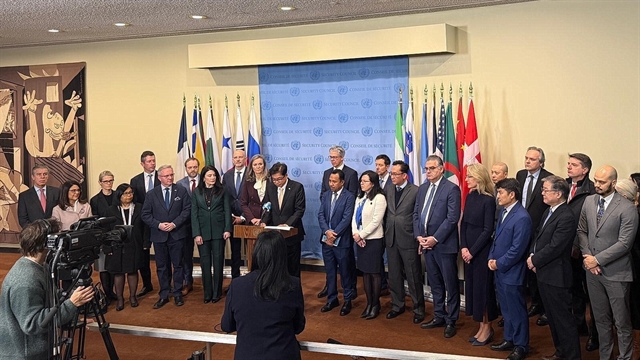 Society
Society

 |
| A rural road in Long Thành Hamlet in Long An Province’s Châu Thành District is paved, with planted trees and flowers and installed road lamps. — VNA/VNS Photo Minh Hưng |
LONG AN — Long An Province has developed a programme for building new-style rural area effectively, improving the lives of rural people.
The Cửu Long (Mekong) Delta province has 121 of its 161 communes recognised as new-style rural communes under the national programme on building new-style rural areas.
To get recognition as a new-style rural area, a commune must meet the programme’s 19 criteria related to planning, infrastructure, environment, income, education, healthcare, social security, culture, among others.
The province also has 30 communes recognised as advanced new-style rural communes which must achieve higher standards across all 19 criteria than a new-style rural commune.
Four of its 15 district-level localities have completed the work of building new-style rural areas.
Cần Đước District has all its 16 communes along with Cần Đước Town meeting the 19 criteria and five communes recognised as advanced new-style rural communes.
More than 10 years ago, the district used to be a poor locality and its infrastructure such as roads, schools, and power and clean water supplies did not meet the 19 criteria when it started implementing the programme.
Most rural roads are now paved with asphalt or cement, with planted flowers and equipped lamps, and rural people travel and transport agricultural products more easily.
Nguyễn Thị Đủ, a resident in Cần Đước’s Phước Đông Commune said: “The programme has benefited local people very much.”
For instance, after the State encouraged local people to donate land to expand rural roads from three to five meters wide, transport had been facilitated and agricultural products were sold at a higher price, she said.
Thatched-roof houses had been replaced by concrete houses and rural people’s living standards were nearly like those of urban people, she said.
Đào Hữu Tấn, deputy chairman of the Cần Đước People’s Committee, said the programme helped improve the lives of local people significantly and they contributed their labour, opinions and properties to build new-style rural areas.
People in the province’s rural areas actively participated in the programme as they had been its direct beneficiaries.
Đặng Văn Mẫm in Vĩnh Hưng District’s Thái Trị Commune said: “I will continue to participate in the programme and do practical things such as contribute money to install road lamps, grow roadside flowers, build flagpoles as regulated, and create a green, clean and beautiful living environment.”
Nguyễn Thanh Truyền, director of the province Department of Agriculture and Rural Development and deputy head of the province’s steering committee for building new-style rural areas, said the look of rural areas had been improved significantly as their infrastructure had been invested in.
Specialised and concentrated farming areas had been established, had applied advanced farming techniques and had high production efficiency, he said.
Culture, health care and education activities had been implemented well, and social order and security had been secured, he said.
The province’s income per capita reached more than VNĐ90 million (US$3,800) last year and the number of poor households was reduced to 0.97 per cent as of June this year.
In 2021-23, the province has mobilised more than VNĐ100 trillion ($4.2 billion) to invest in infrastructure for building new-style rural areas, and develop high-tech agriculture, a collective economy and digital transformation.
Targets
Long An plans to have nine additional communes recognised as new-style rural communes this year.
It also aims to have 12 communes recognised as advanced new-style rural communes and two as exemplary new-style rural communes this year.
An exemplary new-style rural commune must be an advanced new-style rural commune and achieve higher standards across all 19 criteria, including having a 10 per cent higher per capita income.
The province People’s Committee has implemented a programme for digital transformation when building new-style rural areas towards smart rural development to 2025.
The programme aims to improve the rural economy and the lives of rural people, and narrow the gap in service quality between rural and urban areas.
It plans to have at least 90 per cent of provincial-level, 80 per cent of district-level and 60 per cent of communal-level public documents processed online.
It targets to have at least 40 per cent of communes and districts provide at least one essential public service, such as healthcare, education, security, environment and culture, online.
It is creating favourable conditions for investors to invest in digital infrastructure and develop internet services to communes and hamlets. — VNS




